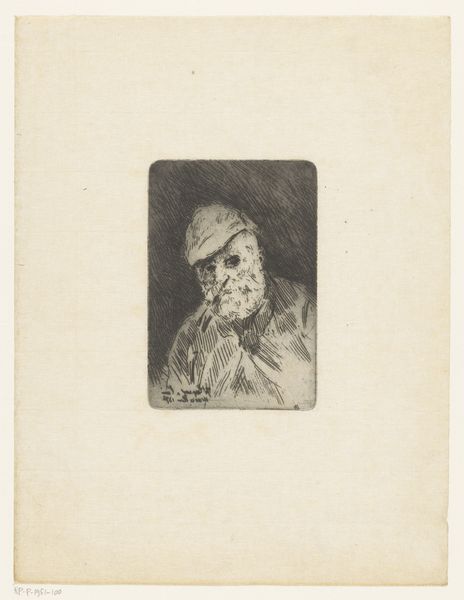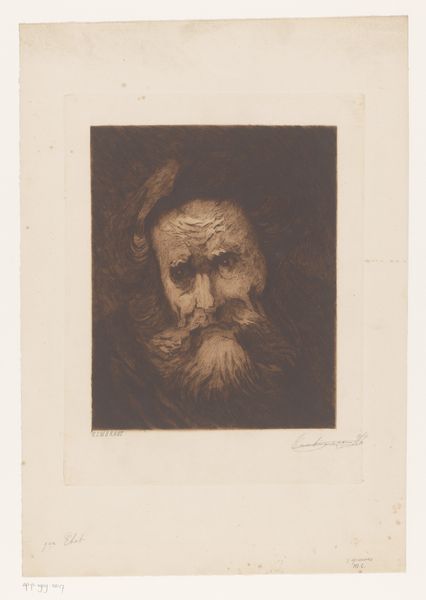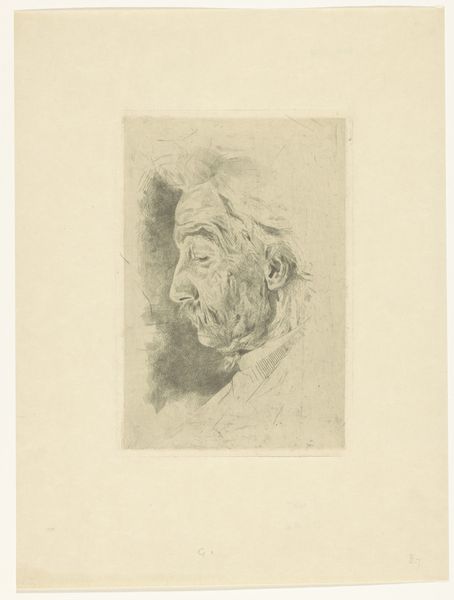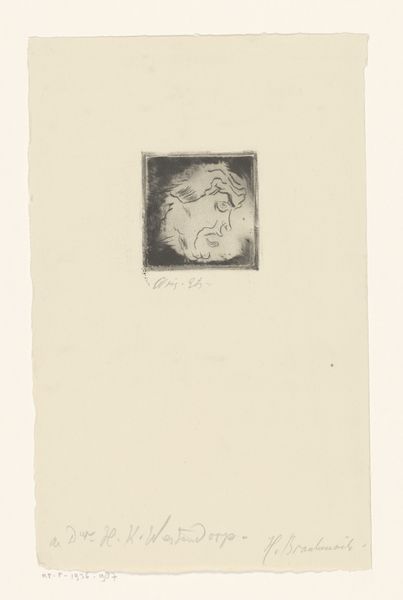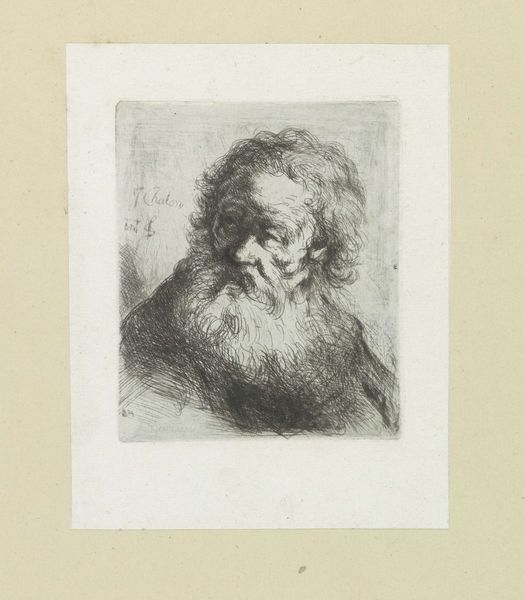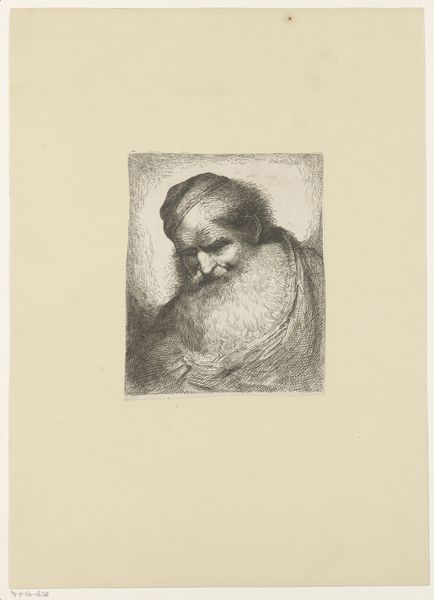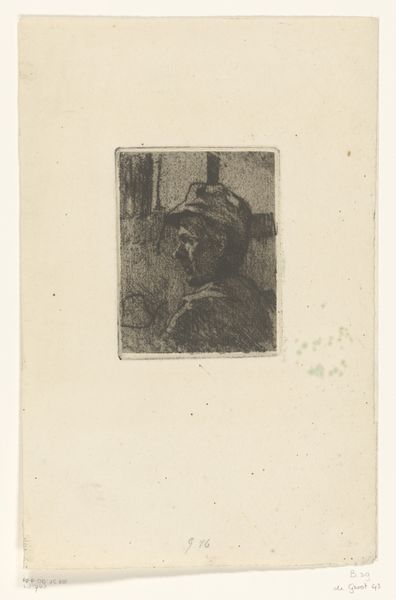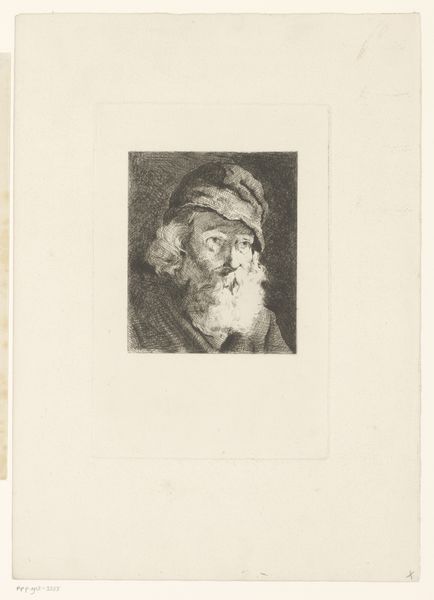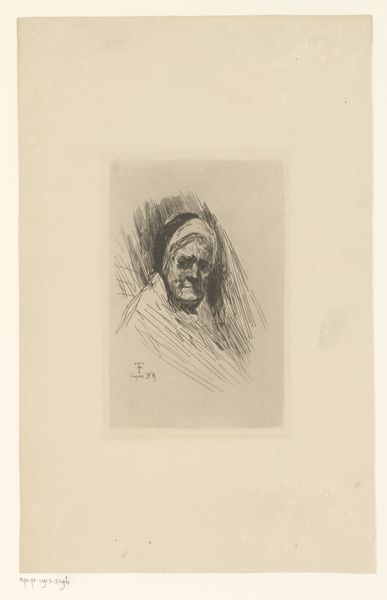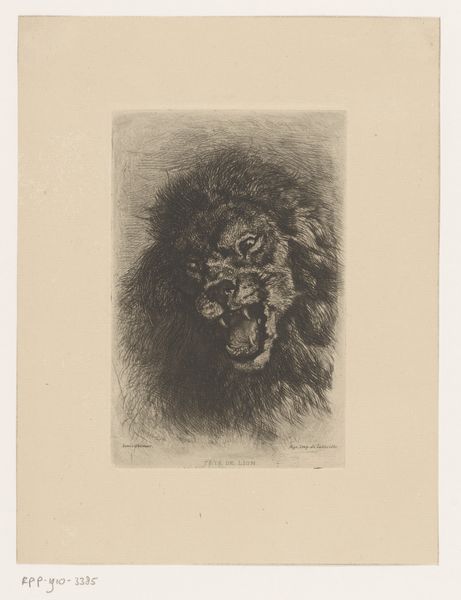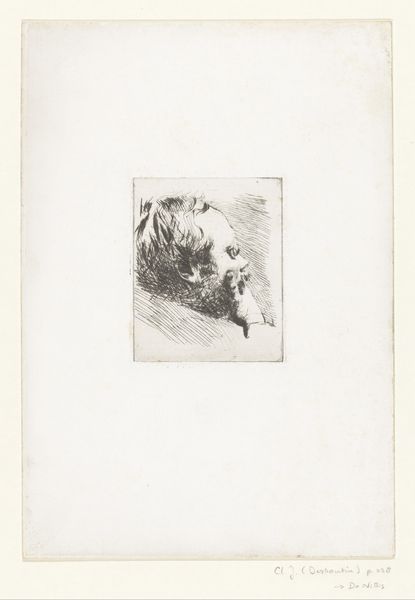
print, etching
#
portrait
#
pencil drawn
# print
#
etching
#
pencil sketch
#
figuration
#
academic-art
Dimensions: height 132 mm, width 127 mm
Copyright: Rijks Museum: Open Domain
Curator: Here we have Auguste Danse's 1882 etching, titled "Silenus," currently residing at the Rijksmuseum. Editor: What strikes me first is the overwhelming feeling of introspection. The heavy brow, the downwards glance – there's a profound sense of contemplation, or perhaps just exhaustion, etched into his features. Curator: Given the era and the academic leanings, the process likely began with detailed life studies, perhaps even anatomical drawings. Etching allowed Danse a control over the medium which in the art academy of the time had an important place in the hierarchy. It allowed him to produce multiple copies. It also highlights the material reality of its production and circulation within academic and artistic circles of the period. Editor: Absolutely, Silenus, the tutor of Dionysus, the god of wine and ecstasy. The figure's perpetually drunk, yet also carries profound wisdom – a duality echoed in the light and shadow Danse uses so effectively. That wisened old drunk perfectly represents paradox, which makes the composition incredibly powerful. It embodies both the earthly and the divine. Curator: Precisely! Note the detail given to the beard – observe it, its not merely decorative. Silenus's wild hair speaks to an unkempt, perhaps untamed, life. There is an interplay of controlled academic mark-making, but at the same time some wild strokes that create the uninhibited effect of his being. The paper it’s printed on also emphasizes its value as an edition. It speaks volumes about the value put on crafted, artisanal techniques during the period. Editor: But consider the broader implications. Silenus appears to defy traditional expectations. There is a certain sadness as well; perhaps it is his gaze or is this because he represents the fading influence of the classical world with the rise of modernity. Curator: His is also about art’s material value in the world in his time. Its reproduction makes it also a part of capitalist consumption and trade, to own and posses culture for everyone, that could have owned that image. The technique of academic drawing, its materiality in trade, consumption makes this peace to examine for me very exciting. Editor: I agree that its an amazing thing. Examining Silenus offers us such richness—a complex dialogue between materiality, myth, decline, beauty, chaos and perhaps ultimately wisdom, isn’t it? Curator: Precisely. It is in that contrast and its journey throughout history to what is present is something to cherish.
Comments
No comments
Be the first to comment and join the conversation on the ultimate creative platform.

